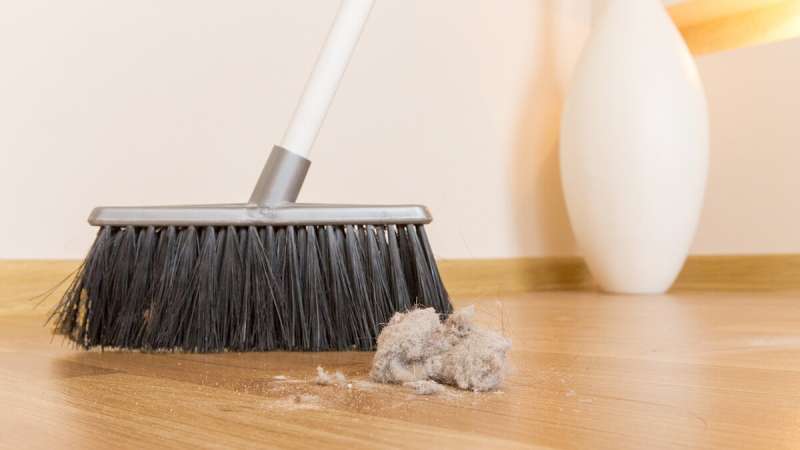Lead remnants can be found in household dust, posing a risk to people, especially children, if ingested. New research has found a simple model that can predict whether a home likely has a low or high risk of lead concentrations. Credit: Mariakray, Pixabay
Although it is a naturally occurring metal, lead can be toxic to humans, especially children. Since 1978, lead has been phased out of many products in the United States (including paint and gasoline), but its remnants can still be found in soil, paint in older homes, and household dust.
In a new study, Dietrich et al. turned to a crowdsourced science data set to help predict the possibility of lead dust contamination in a household's indoor environment. The scientists used data from DustSafe, an initiative in which participants completed an online survey about their home's condition and sent samples of household dust to a lab. Dietrich and colleagues used hundreds of samples throughout the United States in this data set, along with various predictor variables—including the age of the house, the presence of paint peeling on the interior and/or exterior of the home, and whether there was a recent home renovation—to inform a simple logistic regression model. The researchers then tested to see whether the model could predict whether a house had low (<80 parts per million) or high (≥80 parts per million) levels of lead present.
They found that the model was most successful at predicting whether a home had high or low lead dust concentrations (75% accuracy) when it used only two independent variables: housing age and interior peeling paint. Incorporating the two variables, Dietrich and colleagues built a mobile household lead screening app. In addition to providing users with a custom lead risk assessment, the app allows users to register for free dust and soil lead screening.
The researchers hope their predictive model and app can be used as an intervention tool so that residents can make proper lead mitigation efforts if need be. Furthermore, similar modeling efforts and crowdsourced science can be extended to other household contaminants, such as arsenic and radon, the authors say.
The research appeared in GeoHealth.
More information: Matthew Dietrich et al, Using Community Science to Better Understand Lead Exposure Risks, GeoHealth (2022). DOI: 10.1029/2021GH000525
Provided by American Geophysical Union
This story is republished courtesy of Eos, hosted by the American Geophysical Union. Read the original story here.
























